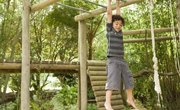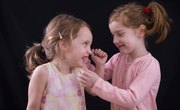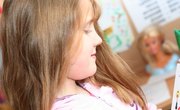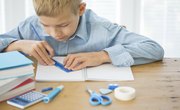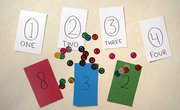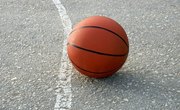Spatial activities are designed to help young children understand the world around them and how they interact with it. Spatial activities can help children learn science, math, art and also develop motor skills and coordination. Not all children develop spatial skills at the same pace, so use varied techniques to integrate the skills into the classroom, and slowly. Spend time with students on a one-on-one basis to encourage the development of spatial skills.
Games
Game are the ultimate learning tool for teachers of young learners. Children learn healthy competition and learn the concept of the lesson in a fun, non-pressured situation. For spatial games, encourage children to build structures using interlocking plastic blocks or wooden play blocks. Try organizing games in a team scenario in which children must use a given material, such as Popsicle sticks or cotton swabs, and arrange them into a shape. Matching shapes and colors is also excellent for learning spatial skills. Cut shapes into different colors of construction paper and put the outline of each shape on a large piece of paper. Each student should take a turn to match the cut-outs with the shapes on the wall.
Projects
Obstacle courses are one of the most useful spatial activities for preschool students. Use your class's input for building an obstacle course and encourage students to gather materials, such as cushions or rugs, that are found in the classroom. Build the course as a class and have students race to see who can do the course the fastest. If you do not have a lot of space for physical activities, the course can be as simple as arranging flat circular cushions on the floor. Students must jump to each cushion, and the person who makes it to the end without falling off wins.
Literacy and Numeracy
To motivate students to learn literacy and numeracy skills, develop spatial activities to sharpen these skills. Combine spatial activities with your class's morning circle routine and use the calendar for counting activities. Put numbered tiles (or squares of card paper with numbers on them) in a bag. When students tell what date of the month it is, choose a student to find the numbered tile in the bag. Ask students to find the next five numbers in the sequence and put them in order. At the end of the month, let students work as a team to put the entire month in order. This activity can also be interpreted for learning the alphabet. Have students put the letters in order and try to find an object in the classroom to match each one.
Contests
Healthy competition is great for preschool-age children because they learn to be gracious losers and courteous winners. To help with spatial sense development, organize a class relay race. Organize teams of four children or fewer and make a brightly colored, large baton for them to pass. By running or performing another task to get to the hand-off point and handling the baton so that they don't drop it, children learn hand-eye coordination. Make sure to organize the teams so that all of the highly developed children are distributed across all teams. In other words, do not place all of the advanced children on one team.
Related Articles
Writer Bio
Patricia K. Maggio is a freelance writer originally from Chicago, Ill. She has been living, studying or working in Europe since 2007, when she graduated with a B.A. in English from DePaul University. Most recently, her screenwriting work has appeared on BBC America and STYLE Network.



